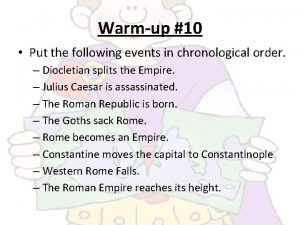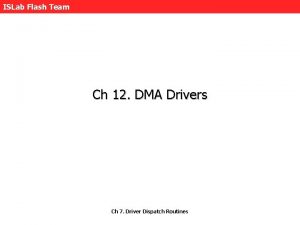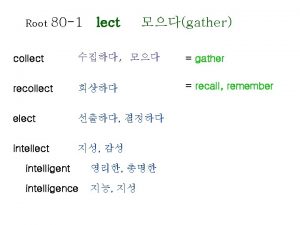Lets All Gather Together A Chronological History of




![Constantine the Great (27 February 272[2] – 22 May 337) First Roman Emperor to Constantine the Great (27 February 272[2] – 22 May 337) First Roman Emperor to](https://slidetodoc.com/presentation_image_h2/d86b3e812376b53dd48cdcaa450855d0/image-5.jpg)











- Slides: 16

Let’s All Gather Together ~A Chronological History of the English Reformation and Food ~

Roman Occupation of Britain 43 A. D to 410 A. D Historical Background Aulus Plautius invades Great Britain in 43 A. D. Queen Boudicia leads a revolt against the Roman occupation (62 A. D. ) Hadrian’s Wall constructed (122 A. D. ) (Roman Emperor Hadrian) Antonine’s Wall constructed (142 A. D. ) (Roman Emperor Antoninus Pius Last Roman leaves Britain (410 A. D. ) Epicurean Background • Foods imported with the Roman invasion: – Pheasants, peacocks, guinea fowl and fallow deer – Cultivated the sowing and harvesting of cabbage, onions, leeks, shallots, carrots, endive, globe artichokes, cucumbers, marrow, asparagus, parsnips, turnips, radishes, and celery – Popularized the use of herbs and seasonings, including parsley, borage, chervil, coriander, dill, fennel, mint, thyme, garlic, rosemary, sage, savory, sweet marjoram, and radish – Dates, almonds, olives and olive oil, pine cones and kernels, liquamen/garum (fish sauce), pepper, ginger, and cinnamon – Grapes, vineyards and wine, as well as orchard crops including medlar, mulberry, damson, plum and cherry Source: http: //www. herefordshire. gov. uk/htt/1308. aspx

Age of Christian Martyrs 54 A. D. – 305 A. D. Nero persecutions (54 – 68 A. D. ) Domitian persecutions (81 – 96 A. D. ) – The Revelation of St. John Trajan persecutions (112 CE) – Persecution of St. Ignatius (Bishop of Antioch in Syria) North African persecutions – Perpetua and Felicity (female martyrs) Decian Persecutions (250 – 251 A. D. ) – Traditsio (traitor) Diocletian persecutions (330 -305 A. D. ) – St. George of Lydda Epicurean Facts: Deipnosophistae a/k/a The Banquet of the Learned (or) Philosophers at Dinner (or) The Gastronomers Written in Rome in the early 3 rd century by Hellenistic author, Athenaeus, it is a literary work of the Roman leisure class, detailing not only cookery recipes but also music, sexual mores (homosexuality), literary gossip, and philology. Recipe for fish: Tainia: gut, discard the head, rinse, slice; add cheese and [olive] oil.

Age of Apologetics 2 nd, 3 rd and 4 th Centuries 1. Justin Martyr (interpreter of the Logos) 2. Athenagoras of Athens (defender of Christians from charges of athieism) 3. Clement of Alexandria (the value of the spiritual over the material) 4. Origen (unify Christianity and platonic philosophy) 5. Eusebius of Caesarea (historian and biblical scholar Epicurean Facts: The Roman diet consisted of shell fish (particularly oysters), milkfatted snails (fried in oil and served with liquamen mixed with wine), wild boar stuffed with live birds, and fattened dormice
![Constantine the Great 27 February 2722 22 May 337 First Roman Emperor to Constantine the Great (27 February 272[2] – 22 May 337) First Roman Emperor to](https://slidetodoc.com/presentation_image_h2/d86b3e812376b53dd48cdcaa450855d0/image-5.jpg)
Constantine the Great (27 February 272[2] – 22 May 337) First Roman Emperor to convert to Christianity Edict of Milan (313) (Christianity now official religion of the Roman Empire Council of Nicea (325) Players in Christian Orthodoxy: Arius (Arian Heresy), Athenatius (Italy), Jerome (North Africa), Augustine (Asia Minor), Gregory the Great, Gregory Naziansus, Basil the Great, and Mecrina Apicius A collection of Roman cookery, thought to be compiled in the late 4 th or 5 th Century A. D. It is one of the first known “cookbooks” Recipe (Lamb/Kid stew): Put the pieces of meat into a pan. Finely chop an onion and coriander, pound pepper, lovage, cumin, liquamen, oil, and wine. Cook, turn out into a shallow pan, thicken with starch. If you take lamb you should add the contents of the mortar while the meat is still raw, if kid, add it while it is cooking.

Britain: Post-Roman Occupation (Life According to Bede) (409 – 735 A. D. ) 409 A. D. – Rome was overthrown by the Goths – Rome ceased to rule in Britain 430 A. D. – Palladius sent to the Scots (Ireland) to be their first Bishop 565 A. D. – Columba came out of Scotland into Britain to teach the Picts – built a monestary in the isle of Hii 596 A. D. – Augustine came to Britain to be first Archbishop of Canterbury 601 A. D. – Paulinus ordained as priest by Augustine 625 A. D. – Paulinus consecrated as bishop of the Northumbrians by Archbishop Justus 626 A. D. – Paulinus baptizes Eanfled and others (including Hilda of Whitby) on the eve of Whit-Sunday

Aidan, Hilda, and the Synod of Whitby (664 A. D. ) Aidan of Lindisfarne – Baptized Oswald of Northumbria – Taught Hilda of Whitby – Followed Scots’ dating method for Easter Hilda of Whitby – Baptized by Paulinus – Taught by Aidan – Followed Scots’ dating method for Easter – Hosted Synod of Whitby (664 A. D. ) – Called by King Oswiu to obtain a consensus on the proper method for the dating of Easter. Determined that Roman dating of Easter is proper custom

A Sampling of Anglo-Saxon Culinary Arts Recipe (Hare, Rabbit, Veal or Chicken Stew with Herbs and Barley) Anglo-Saxon Foodstuffs: • • Figs, grapes, small apples, plums, cherries and sloes Wheat, rye, oats and barley, Welsh carrots, parsnips, cabbages, burdock and rape, onions, leeks, wild garlic, peas and beans Ginger, cinnamon, cloves, mace, and pepper Honey (Mead) Apple wine Acorns Herring, salmon, eel, pike, perch, flounder, whiting, cod, brown trout, oysters, mussels and cockles Pig, chicken, ducks, geese, grouse, herons, hares, deer, wild boar, cow, sheep and goat Melt butter in a heavy pan and fry the meat with leeks and garlic till the vegetables are slightly softened and the meat lightly browned. Add barley, water, vinegar, bay leaves and seasoning. bring the pot to the boil, cover it and simmer gently for 1 - 1 1/2 hours or till the meat is really tender and ready to fall from the bone. Add the sage and continue to cook for several minutes. Adjust the seasoning to taste and serve in bowls-- the barley will serve as a vegetable. Source: The British Museum Cookbook_ by Michelle Berriedale-Johnson (1987, British Museum Publications Ltd. )

The Reformation How to Brew Your Own Beer Martin Luther • Posted his Ninety-Five Theses (1517) – Excommunicated (1521) John Calvin - Predestination and election Huldrich Zwingli – The Swiss Reformation Using a copper cauldron, if possible, simmer on a gentle boil, the malt in soft water for around two hours. Transfer to a wooden barrel or similar container and leave to cool down to a temperature of around 16 degrees Celsius. Add gruit and leave to ferment in a warm location. After about six to eight hours, cover with a thin cloth. Other than an occasional stir, leave the mash alone. Leave mash to ferment for at least 24 hours but not more than 3 days. How strong you want the beer will be determined by the length of fermentation. Strain the mash, starting with a coarse sieve and continue to strain 2 or 3 times to remove the yeast. DO NOT THROW THE MASH AWAY – use it to make bread. Let stand for a further hour or so to allow sediment to settle to the bottom. Drinking now “may cause wind amongst those who drink it. ” Strain a second time (use this yeast for further brewing). After the third straining, the ale should be good to go. Drink within 2 days or it may cause “upset”. Source: nvg. org. au/documents/other/anglosaxonrecipes. pdf

Henry and Elizabeth (The Church of England) Henry VIII Married to and later divorces Catherine of Aragon – Has 1 child, Mary. Marries, and beheads, Anne Boleyn – Has 1 child, Elizabeth Separates Church authority from Rome, becomes Supreme Head of the English Church Marries Jane Seymour – has a son, Edward Elizabeth Thirty-Nine Articles Acts of Settlement and Uniformity Outward conformity in matters of order, rather than inward unity of faith was the goal. Via Media

Coronation Feasts (A Sample of Possible Dishes) Crustade of Chicken and Pigeon Split Roasts A Jellie of Fyshe Scallops with Spiced Sausage Meat Nut and Leek Stew Lettuce with Hardboiled eggs and Spring Onions Curd cheese pastries Fruit cake Gustum de Praecoquis Cream Cheese and Honey Slices Beer/Ale Apple wine

Richard Hooker (1554 – 1600) Laws of Ecclesiastical Politie (1594 – 1597) • • • Scripture alone is the rule of all things which may be done by men; Scripture prescribes an unalterable form of Church government; The English Church is corrupted by popish orders, rites etc. ; The law is corrupt in not allowing lay elders; 'There ought not to be in the Church Bishops'

The Wesley Method (18 th Century) John Wesley Via salutis – the way of salvation: prevenient grace, conviction of sin, repentance, justification, assurance, regeneration, sanctification, Christian perfection, and final salvation Charles Wesley Hymns and Prayers to the Trinity Come thou long, expected Jesus From English Houswifery, Elizabeth Moxon (1769): CUCUMBER SOOP. Take a houghil of beef, break it small and put it into a stew-pan, with part of a neck of mutton, a little whole pepper, an onion, and a little salt; cover it with water, and let it stand in the oven all night, then strain it and take off the fat; pare six or eight middle-siz'd cucumbers, and slice them not very thin, stew them in a little butter and a little whole pepper; take them out of the butter and put 'em in the gravy. Garnish your dish with raspings of bread, and serve it up with toasts of bread or _French_ roll.

The Oxford Movement (1833 – 1841) Response to a liberalization of the Church by the State The Tractarians: Cover of the Frugal Housewife (1830): – John Henry Newman – Edward B. Pusey – John Keble – Richard Hurrell Froude “Hints to Persons of Moderate Fortune”

Beyond Colonialism (Present time) Ordination of Women (1974) Election of First Female Presiding Bishop (2003) Election of First Openly Gay Bishop (2003) Anglican Covenant Justin Welby, Arch. Bishop of Canterbury (2012) Five Marks of Mission

Final Recipe (Just in Time for Thanksgiving) • • • Turducken Preheat oven to 375 degrees F (190 degrees C). Lay the boned chicken skinside down on a platter and season liberally with salt, pepper and Creole seasoning. Lay the boned duck skin-side down on top of the chicken and season liberally with salt, pepper and Creole seasoning. Cover and refrigerate. Lay the boned turkey skin-side down on a flat surface. Cover with a layer of cold Sausage and Oyster Dressing and push the dressing into the leg and wing cavities so they will look as if they still have bones in them. Lay the duck on top of the turkey skinside down and cover it with a layer of cold dressing. Lay the chicken on top of the duck skin-side down and cover it with a layer of cold dressing. • • • With the help of an assistant, bring the edges of the turkey skin up and fasten them together with toothpicks. Use the kitchen string to lace around the toothpicks to help hold the stuffed turkey together. Carefully place the turducken, breast up in a large roasting pan. Roast covered for 4 hours or until the turducken is golden brown. Continue to roast uncovered for 1 hour or until a meat thermometer inserted through the thigh registers 180 degrees F. and a thermometer inserted through the stuffing registers 165 degrees F. Check the turducken every few hours to baste and remove excess liquid. There will be enough pan juices for a gallon of gravy. Carve and serve. Enjoy!
 Let's fight it together cyberbullying video
Let's fight it together cyberbullying video Clean together
Clean together Put the following events in chronological order.
Put the following events in chronological order. What fires together wires together
What fires together wires together Name three line segments
Name three line segments How do journalists gather information
How do journalists gather information Sometimes the shadows gather lyrics
Sometimes the shadows gather lyrics Cubing can help you gather details about a topic by
Cubing can help you gather details about a topic by Gather approach in family planning
Gather approach in family planning How to gather client requirements
How to gather client requirements Gather acronym in counselling
Gather acronym in counselling Gather ye roses while ye may
Gather ye roses while ye may Gather the people
Gather the people Scatter gather dma
Scatter gather dma Plants gather energy with light-absorbing pigments called *
Plants gather energy with light-absorbing pigments called * Stalin tower
Stalin tower People gather to worship
People gather to worship






























